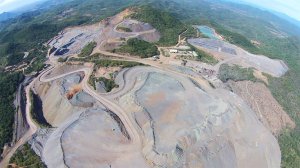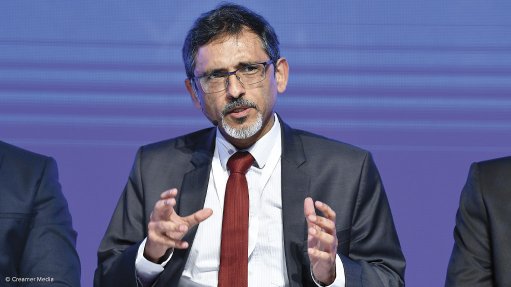Mexico retains appeal for mining investment in tough times
TORONTO (miningweekly.com) – Mexico’s appeal for Canadian mining investment has remained rock solid, with almost $290-million in investment a year secured over the last five years via the TSX and TSX-V, an audience at OntheGround’s recent Mine Latin America seminar was told.
However, security issues and a higher rate of royalties were a concern, as was corruption at local municipal and regional levels.
“But the overall story surrounding Mexico remains positive; there’s a general sense that this is a country people want to do business in,” Control Risks Latin America risk analysis Simon Whistler said. “Companies want to be there and see a lot of potential.”
SOME PRESSURES
Mexico’s various resource sectors had come under pressure because of the general downturn in commodities. “In several places, a number of operations have been suspended due to the prevailing commodity price environment,” Bordeaux Capital principal Max Satel noted.
Despite the headwinds, the government, headed by President Enrique Peña Nieto, has continued to pursue important reforms, particularly in the energy and oil sectors.
This included allowing private oil companies to invest in Mexico for the first time in several decades, easing the monopoly grip of State-owned Petroleos Mexicanos (Pemex) with the hope of increasing output. Pemex’s crude production stood at almost 2.28-million barrels a day for October, compared with 3.3-million barrels a day in 2004.
“The reforms might take longer than planned. The economic conditions – the oil price being part of this – haven’t helped, but they are staying the course on the reforms and that sends a positive signal to investors,” Whistler said.
In mining, the county recorded a total production value of Ps200.9-billion for 2013, the latest figure available in the ‘2015 Mexico Mining Review’.
The country was the leading producer of silver in 2013 and 2014, with 187.2-million ounces and 192.9-million ounces produced respectively, according to GFMS Thompson Reuters ‘World Silver Survey 2015’ for the Silver Institute.
Mexico is also a significant producer of gold, copper and other base metals.
Canada had been an important jurisdiction for raising funds, most notably on the TSX and the TSX-V, Satel noted. “Over the past five years there’s been about $290-million raised a year on the two exchanges,” he said. “That’s mostly for the junior mining companies exploring or developing projects in Mexico.”
Mexico came thirty-third out of 122 countries for 2014 in the Fraser Institute’s investment attractiveness index. Satel noted that it was ranked fifth in Behre Dolbear’s annual investor mining survey, coming behind Canada, Australia, the US and Chile.
However, there were plenty of Mexico-specific challenges unrelated to the downcycle. This included problems created by a lack of synergy between various departments, Satel noted.
“For example, a company might obtain a mineral concession at an auction but then find out some months later that an environmental department has included the terrain in a biosphere,” he said. “That means a series of further applications and changes to your concession, which is time-consuming, expensive and frustrating for the shareholders.”
Changes to the tax levels that came into effect in January 2014 had pushed the effective marginal tax rate on income from mining to around 30% to 40%, Satel said. This made Mexico comparable with Peru.
While the increase was an unwanted development from the miners’ perspective, it was not a primary concern, unlike day-to-day operations and security.
KEEPING SAFE AND SECURE
Several high-profile security incidents affecting mining companies in Mexico occurred this year. This included the robbery of 900 kg gold-bearing concentrate, containing around 7 000 oz of gold at McEwen Mining’s El Gallo 1 mine, in Sinaloa state, in April.
There have also been incidents of offsite kidnapping. For example, a worker from Torex Gold and three contractors were taken along with eight other stakeholders in Guerrero state in February. All were eventually freed. Four workers from Goldcorp were kidnapped in March, also in Guerrero, with three killed.
Both Satel and Whistler stressed that, while security was important, it should be placed in the proper context, away from the perceptions of the broader media. For example, US media reports on Mexico overly dwell on massacres or criminal activity, Whistler noted.
“That paints a dramatic picture of the security environment. But what our clients on the ground tell us is a very different reality,” he said. “They are aware of security issues, but not in a way that necessarily disrupts their business or stops them from doing business.”
The security situation was also variable across the regions of Mexico, with companies having to contend with problems specific to where they worked. However, security was not an insurmountable obstacle for most businesses.
Corruption was problematic but most common at the local or regional levels rather than within the national government. Often it took the form of lower-level public officials seeking a bribe for issuing specific permits.
“This is an issue that the government’s trying to tackle, although I’m not overly confident it will be that successful within the next two to three years,” Whistler said. “But it’s interesting that civil society views corruption as an important issue, demanding greater accountability and transparency from its political leaders.”
This attitude might filter down to the state and municipal officials, influencing their interaction with businesses and the wider public. “Corruption is a hot topic, so I think there will be positive [progress] in the long run,” Whistler added.
For those seeking to enter Mexico, Satal advised against pursuing exploration-stage opportunities or assets. There were also challenges further up the development curve, with companies urged to roadmap development for the next three to five years, rather than 12 to 18 months during the era of the supercycle.
“The near-term challenges are exacerbated by the current commodity price cycle,” Satel added. “But we all know Mexico has some of the richest mineral endowments . . . As we come out of the cycle, and who knows when that will be, I think Mexico will be well-positioned.”
Comments
Press Office
Announcements
What's On
Subscribe to improve your user experience...
Option 1 (equivalent of R125 a month):
Receive a weekly copy of Creamer Media's Engineering News & Mining Weekly magazine
(print copy for those in South Africa and e-magazine for those outside of South Africa)
Receive daily email newsletters
Access to full search results
Access archive of magazine back copies
Access to Projects in Progress
Access to ONE Research Report of your choice in PDF format
Option 2 (equivalent of R375 a month):
All benefits from Option 1
PLUS
Access to Creamer Media's Research Channel Africa for ALL Research Reports, in PDF format, on various industrial and mining sectors
including Electricity; Water; Energy Transition; Hydrogen; Roads, Rail and Ports; Coal; Gold; Platinum; Battery Metals; etc.
Already a subscriber?
Forgotten your password?
Receive weekly copy of Creamer Media's Engineering News & Mining Weekly magazine (print copy for those in South Africa and e-magazine for those outside of South Africa)
➕
Recieve daily email newsletters
➕
Access to full search results
➕
Access archive of magazine back copies
➕
Access to Projects in Progress
➕
Access to ONE Research Report of your choice in PDF format
RESEARCH CHANNEL AFRICA
R4500 (equivalent of R375 a month)
SUBSCRIBEAll benefits from Option 1
➕
Access to Creamer Media's Research Channel Africa for ALL Research Reports on various industrial and mining sectors, in PDF format, including on:
Electricity
➕
Water
➕
Energy Transition
➕
Hydrogen
➕
Roads, Rail and Ports
➕
Coal
➕
Gold
➕
Platinum
➕
Battery Metals
➕
etc.
Receive all benefits from Option 1 or Option 2 delivered to numerous people at your company
➕
Multiple User names and Passwords for simultaneous log-ins
➕
Intranet integration access to all in your organisation





















